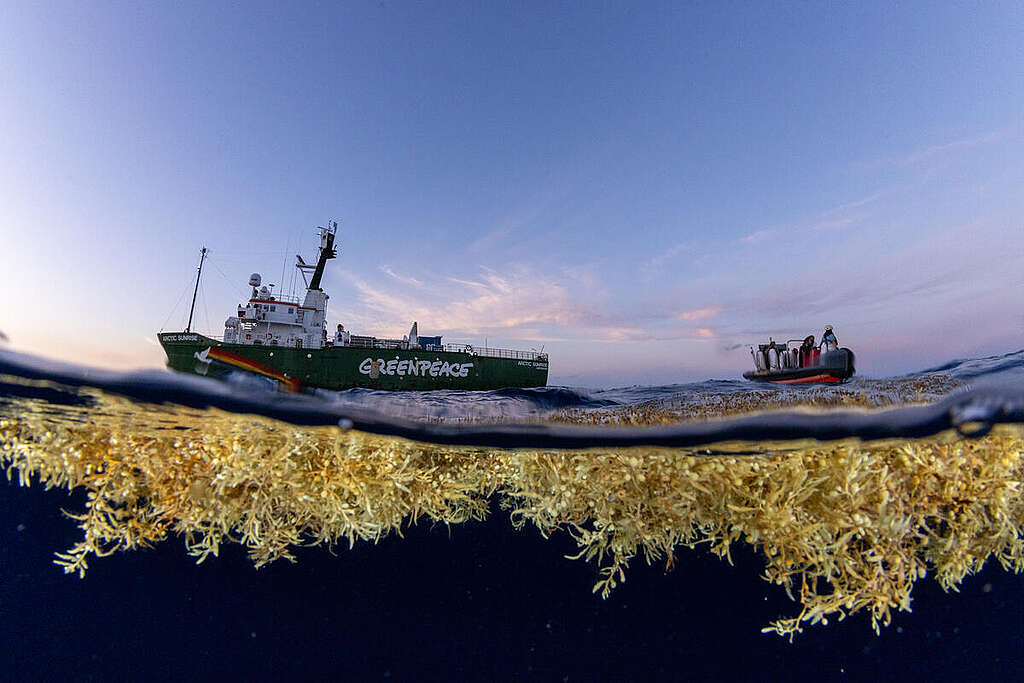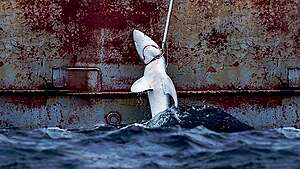You might be familiar with the legend of the Bermuda Triangle, known for the mysterious disappearances of ships and planes. However, beyond the myth lies the Sargasso Sea, a real and ecologically vital part of the ocean that deserves attention.

Where is the Sargasso Sea?
The Sargasso Sea is an area of approximately two million square miles in the North Atlantic Ocean, near the Eastern Coast of the US. Instead of being defined by a shoreline, it’s surrounded by ocean currents. Included in its shifting boundaries are the islands of Bermuda, a British Overseas Territory.
Why is the Sargasso Sea important?
The Sargasso Sea is home to incredible biodiversity and plays a crucial role in global ecosystems. At the heart of the Sargasso Sea, vast mats of golden Sargassum seaweed provide a unique habitat that fosters life. This floating rainforest is a critical stop for many species, providing shelter, food, and a breeding ground.
Species Found in the Sargasso Sea:
The Sargasso Sea is teeming with life. Here are some of the most iconic species that call this area home:
- Green sea turtles: Juveniles find refuge in the Sargassum, using it as a feeding ground and protection from predators.
- Sargassum Frogfish: Perfectly camouflaged, this fish spends its entire life in the floating seaweed. They hide among the weeds to ambush tiny fish or shrimps which also find shelter in the Sargassum.
- Sargassum Crab: Blends into the golden fronds of seaweed, hunting for food and avoiding predators.
- European eels: These critically endangered eels migrate to the Sargasso Sea to lay their eggs before they drift 10,000km back along the Gulf Stream to reach the UK and Europe, where they transform into glass eels.
- Royal Tern and Laughing Gull: Seabirds that use the Sargassum for feeding during their migration.
- Manx Shearwater: The Manx Shearwater bird is also thought to travel to the Sargasso Sea to feed over the winter.
Threats to the Sargasso Sea
The Sargasso Sea, like many unique ocean ecosystems, is under threat. Overfishing and the industrialisation of the oceans from oil drilling and the new threat of deep sea mining mean special places like the Sargasso need our help more than ever.
The Global Ocean Treaty offers hope for protecting this vital habitat. The treaty has set an ambitious goal to protect 30% of the world’s oceans by 2030, with the Sargasso Sea being a priority area for the establishment of a sanctuary.
What does Greenpeace do in the Sargasso Sea?
Greenpeace does important scientific workin the Sargasso Sea like e-DNA sampling and surveys of seabirds and cetaceans (whales, dolphins and porpoises). e-DNA sampling studies the traces of genetic material that creatures leave in the water as they swim through, to measure biodiversity in that part of the ocean.
These studies will gather crucial evidence to help make the case that the Sargasso should become one of the world’s first ocean sanctuaries on the high seas.
The Role of the Global Ocean Treaty
Making the Sargasso Sea the first ocean sanctuary on the high seas would be an incredible start to putting the Global Ocean Treaty’s promise of protecting 30% of the oceans by 2030 into effect.
Protecting the Sargasso Sea is not just about conserving one part of the ocean—it’s about safeguarding the health of our entire planet. The oceans regulate our climate, provide food for billions, and produce the majority of the oxygen we breathe. The Sargasso Sea, often referred to as the “golden floating rainforest,” is a vital part of this intricate system.
By supporting the Global Ocean Treaty and efforts to protect areas like the Sargasso Sea, we are making a choice that will affect the future of all life on Earth.


